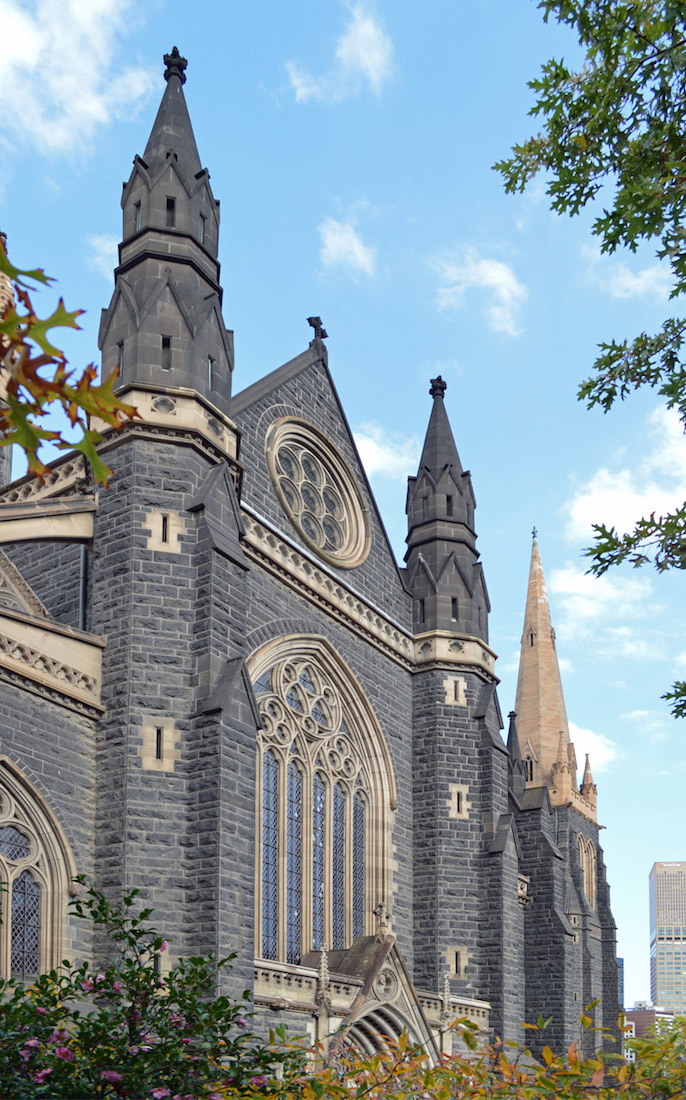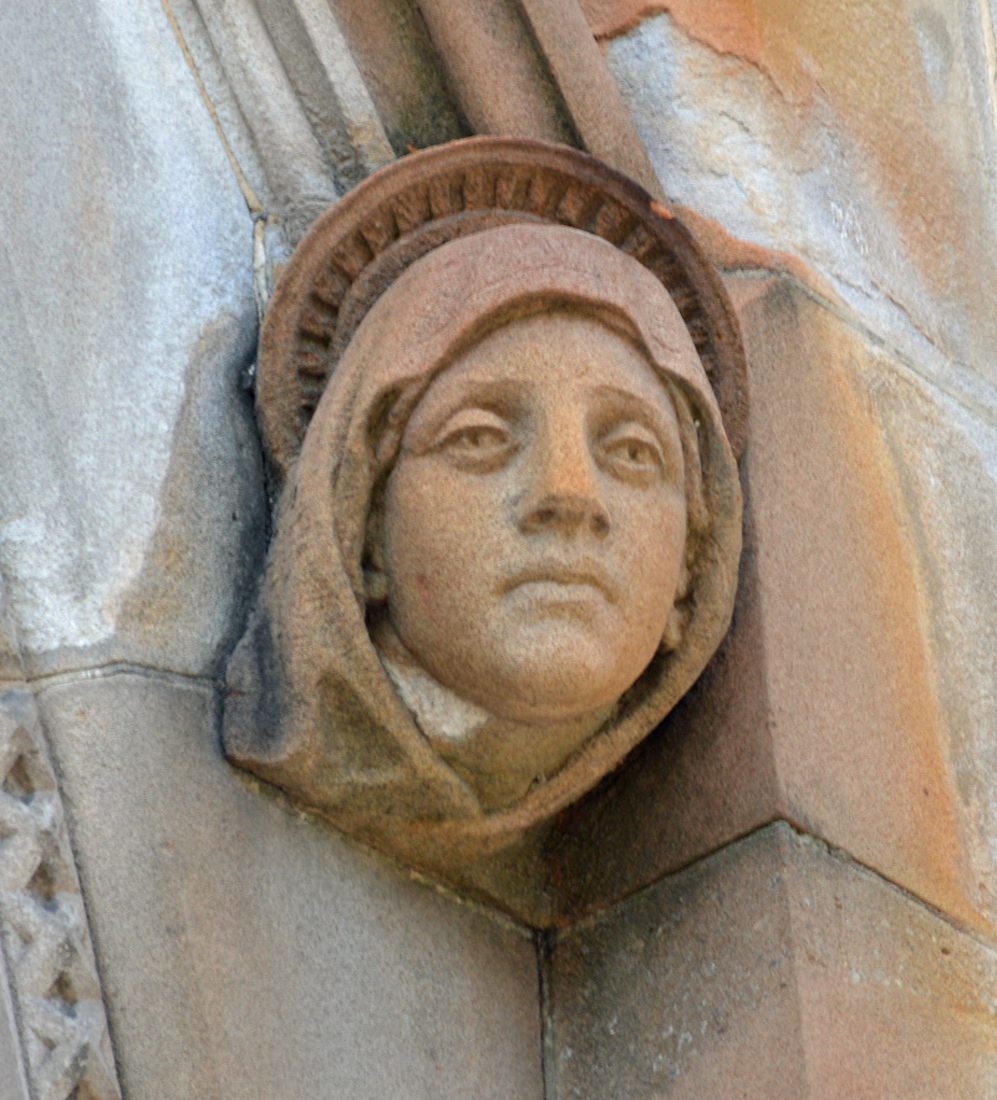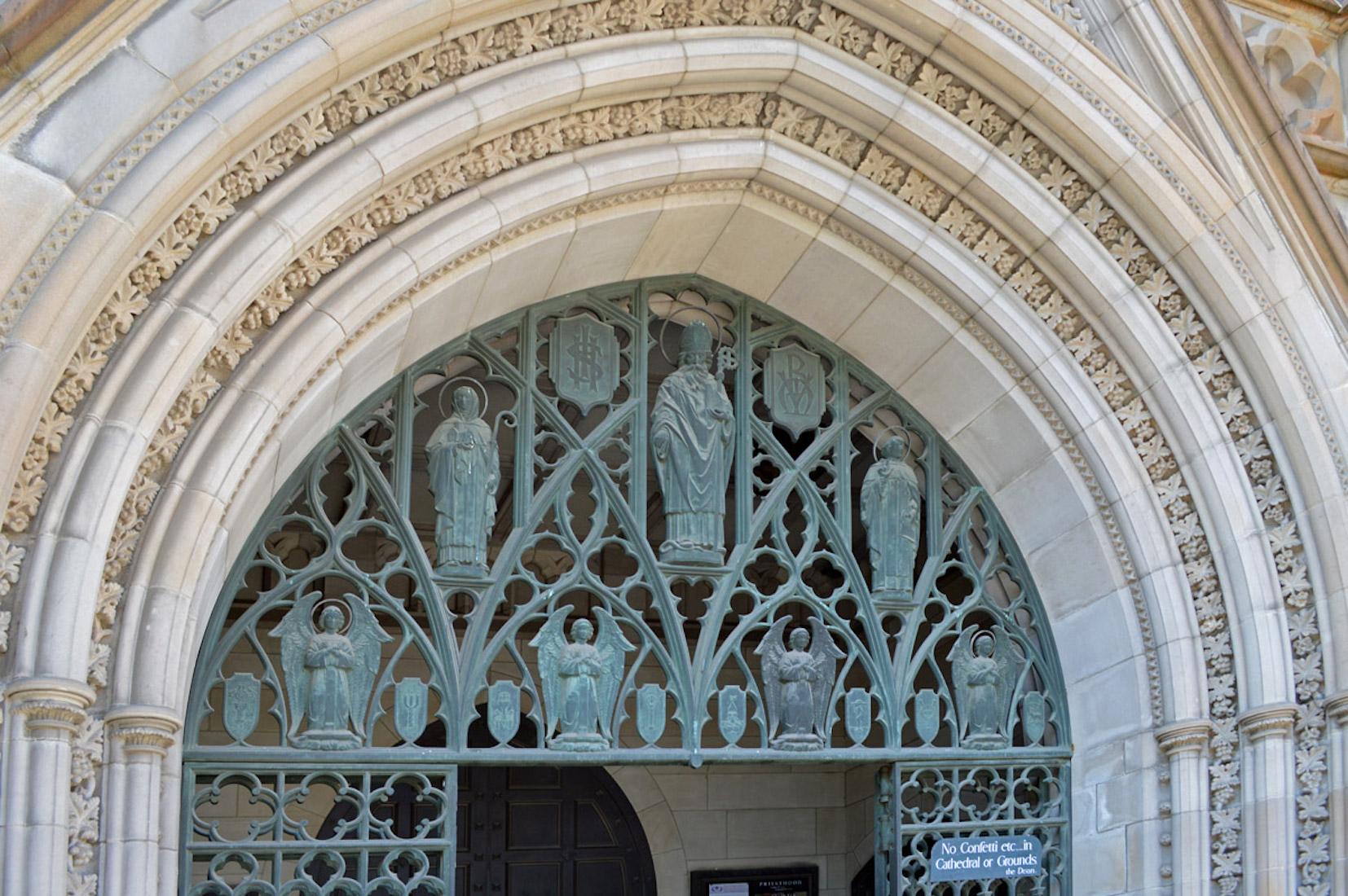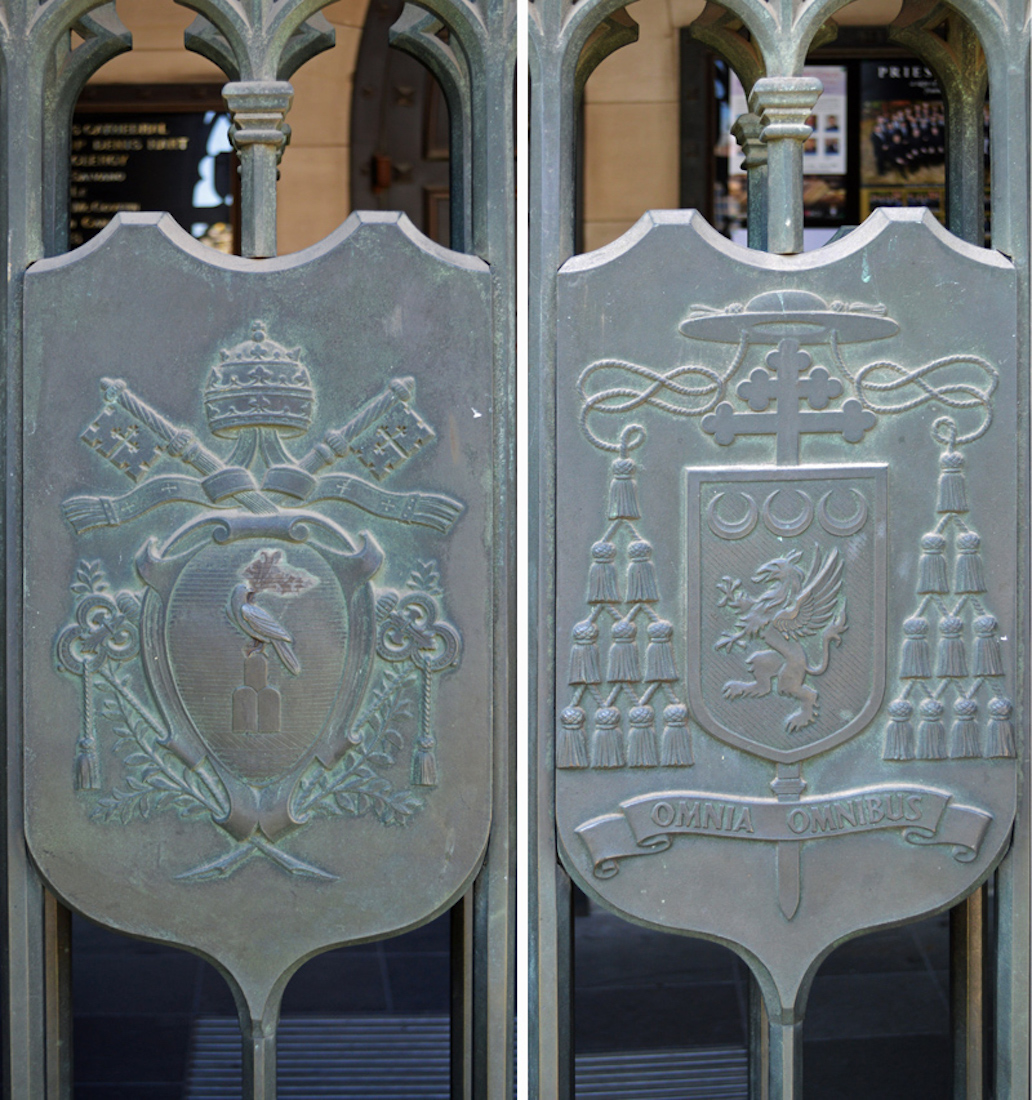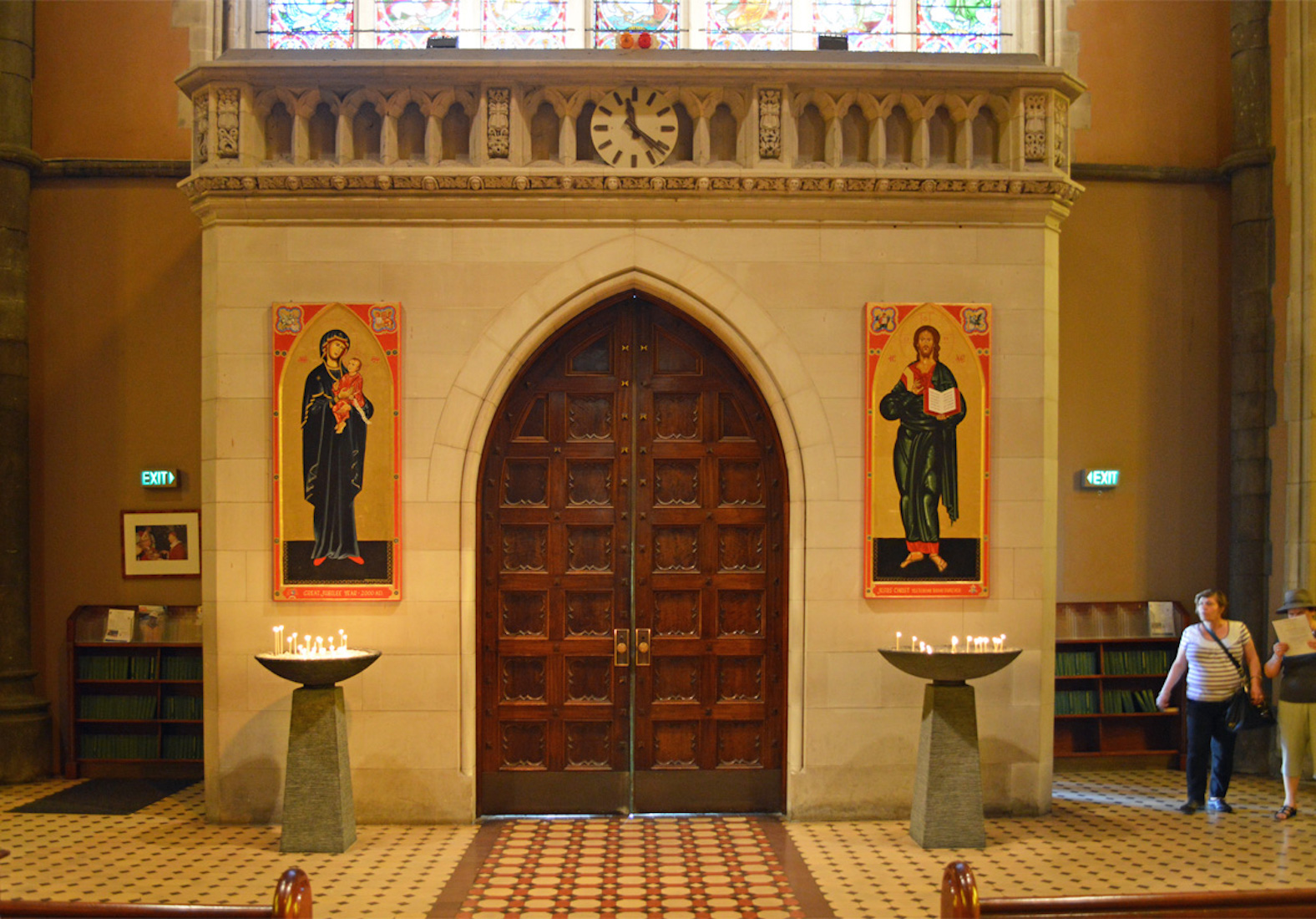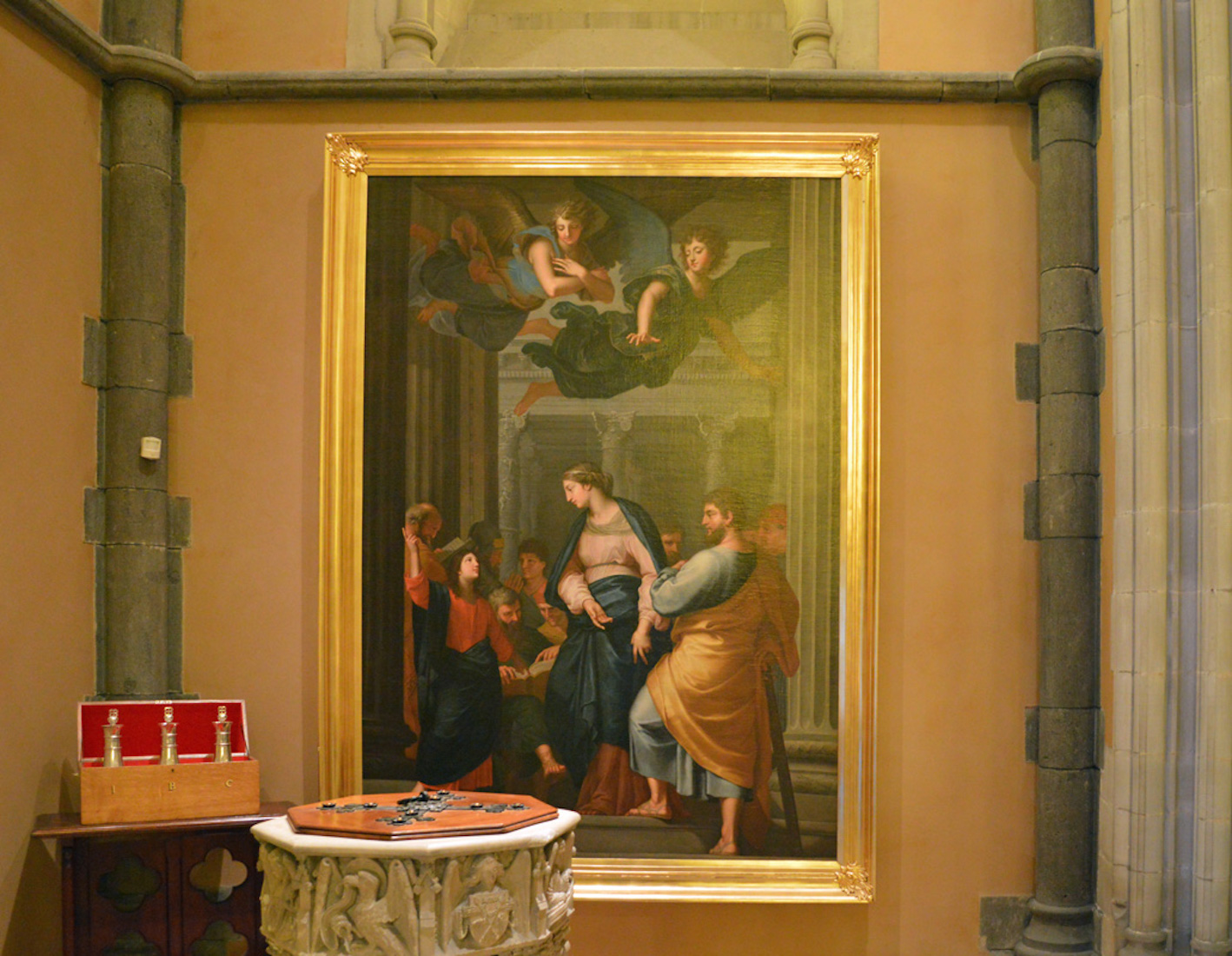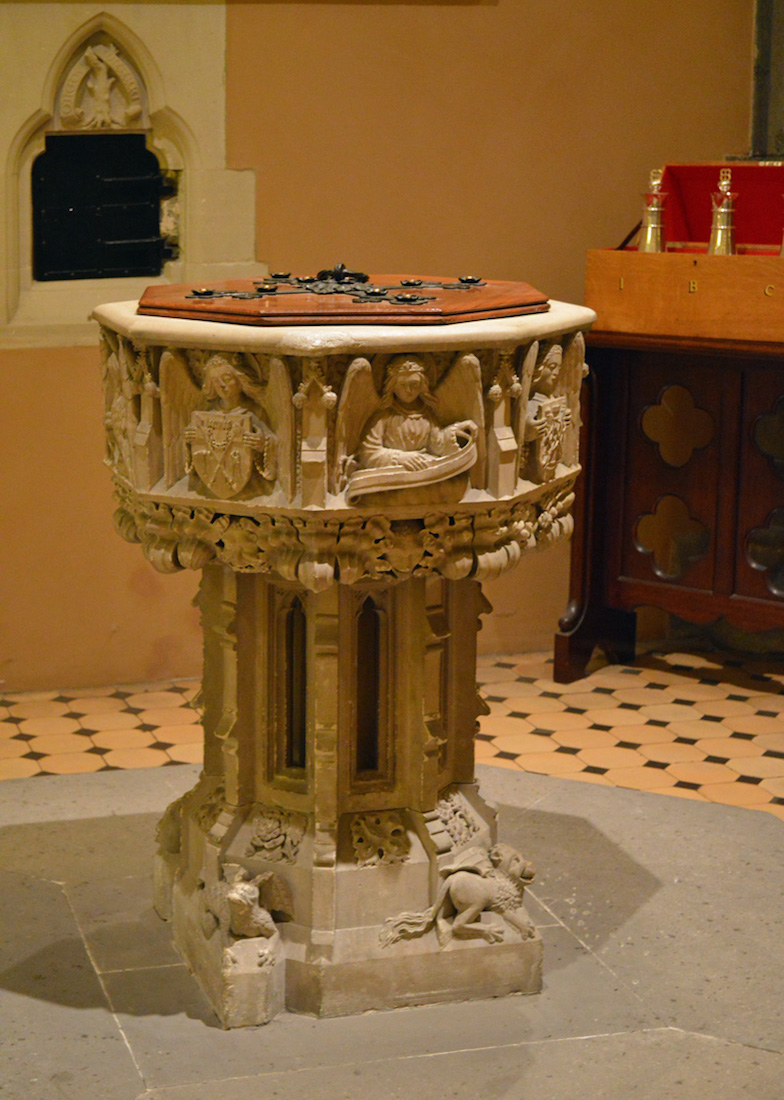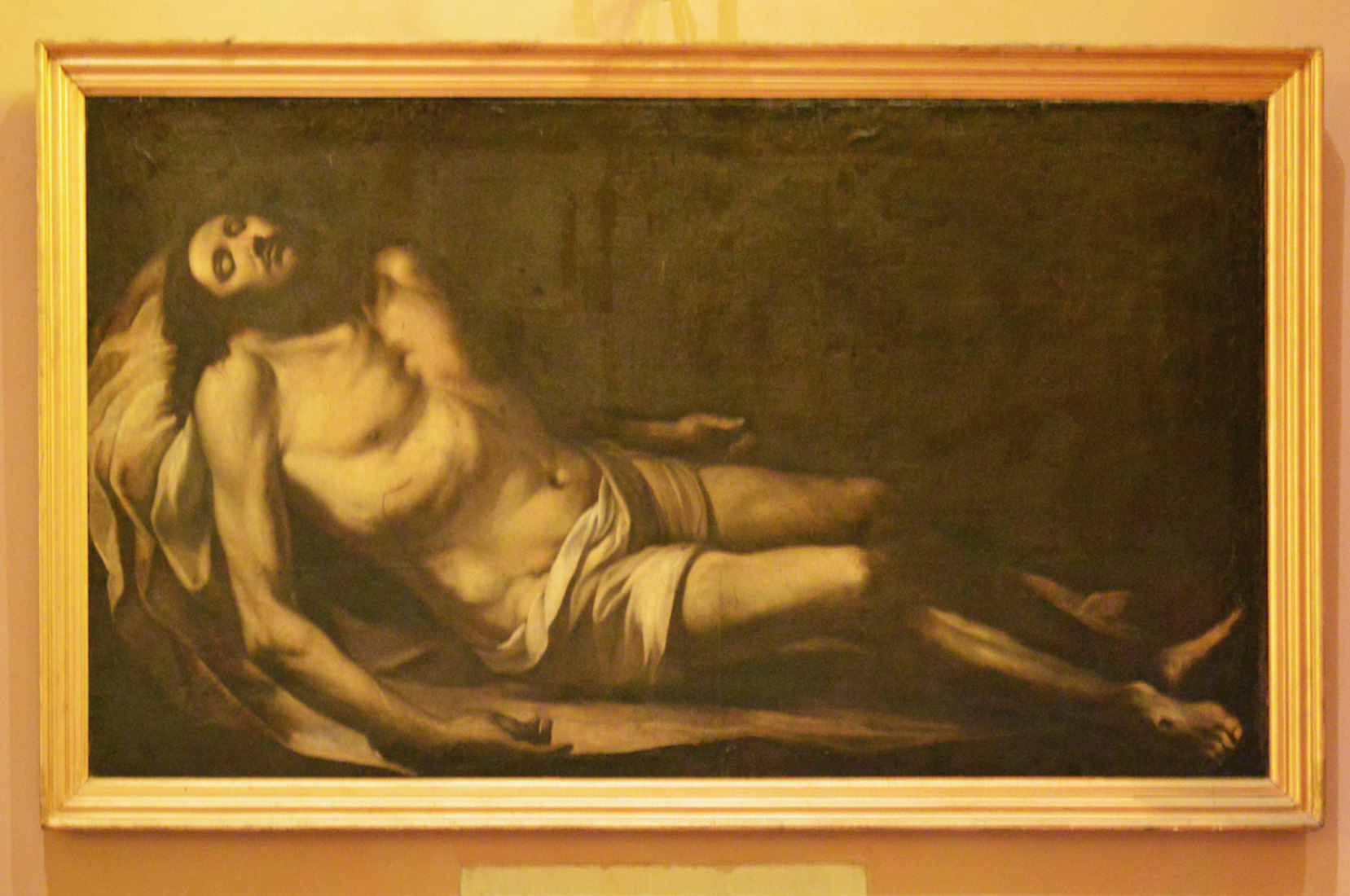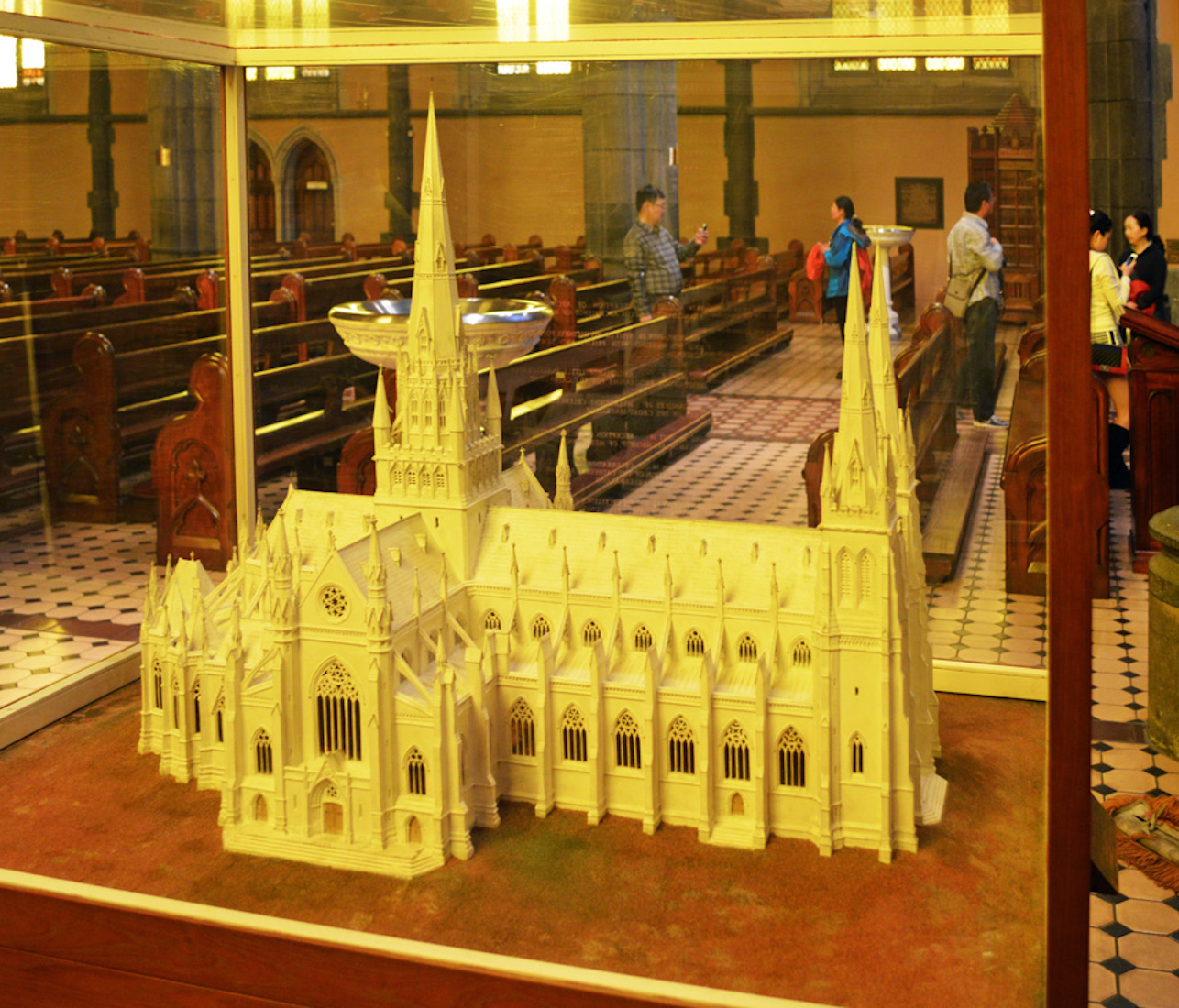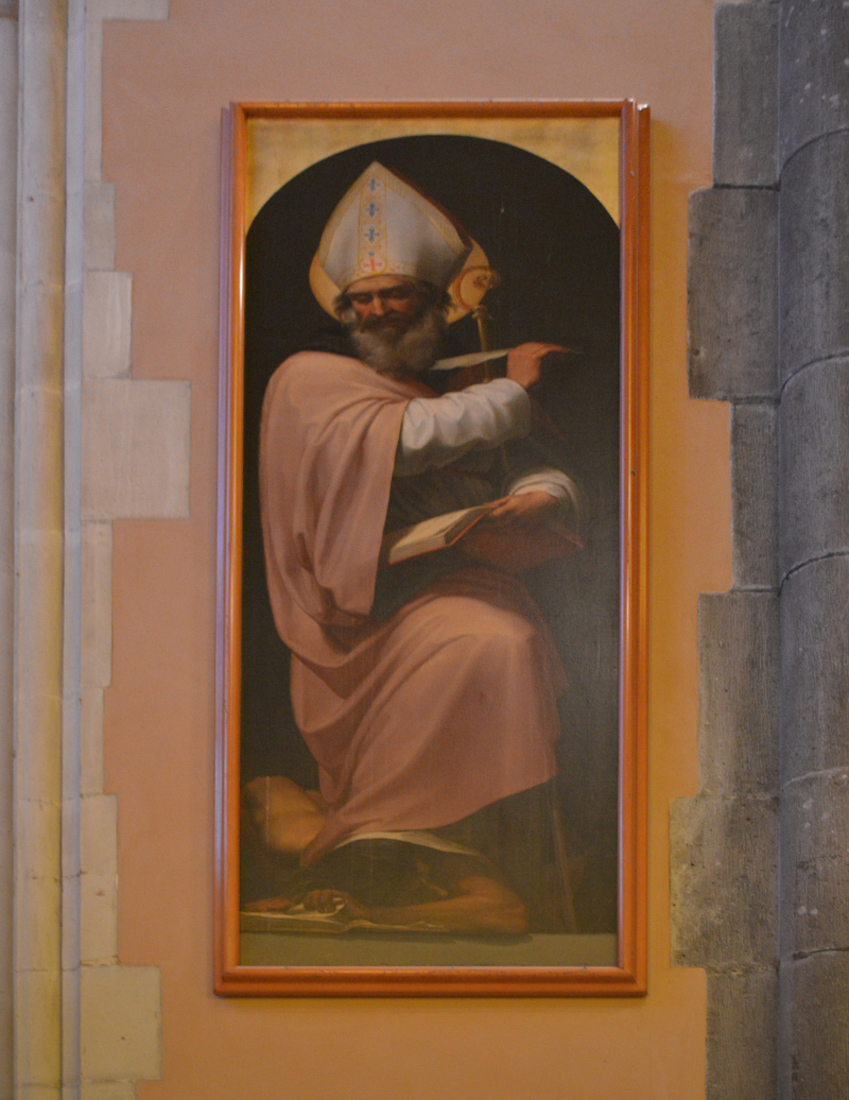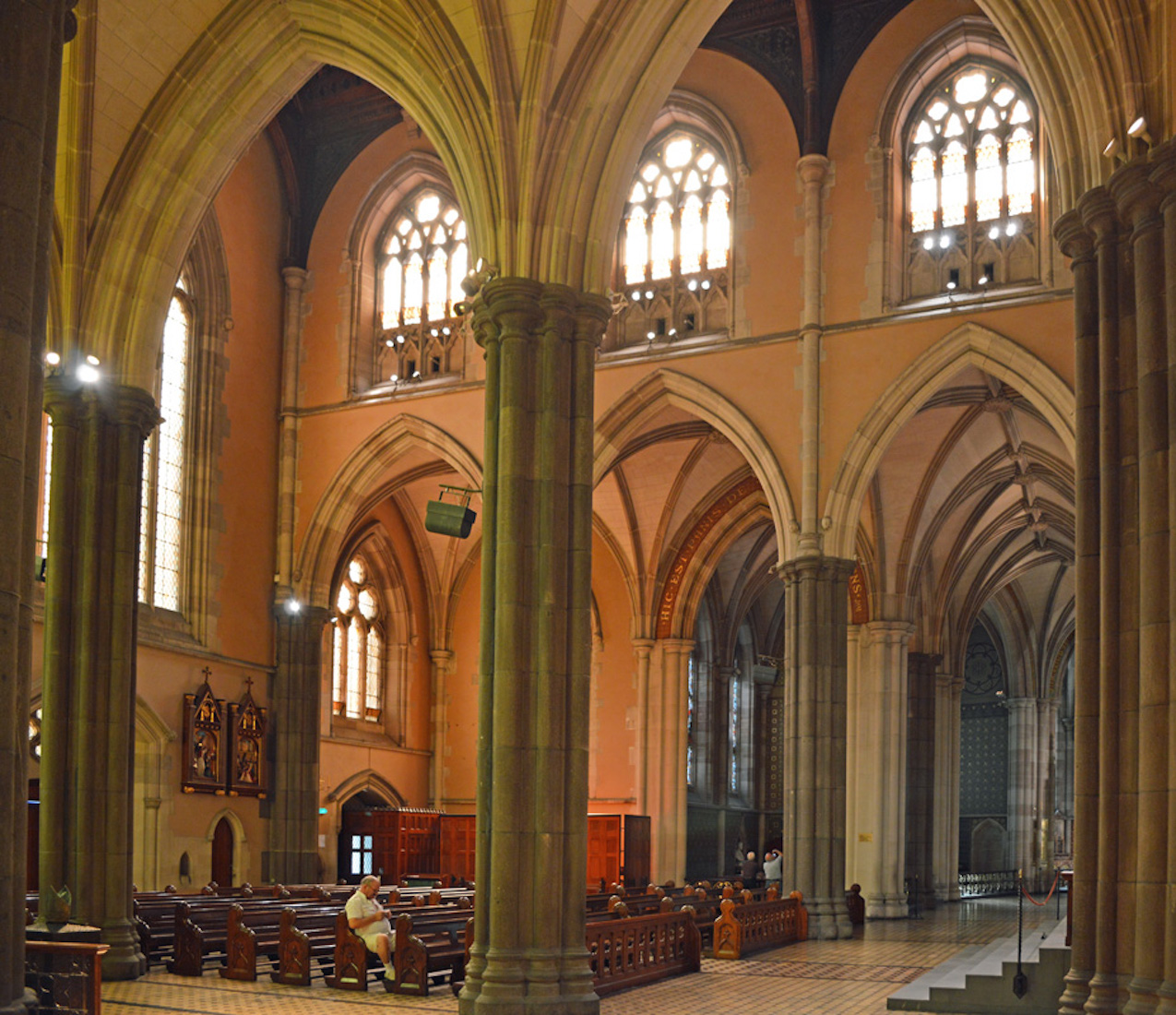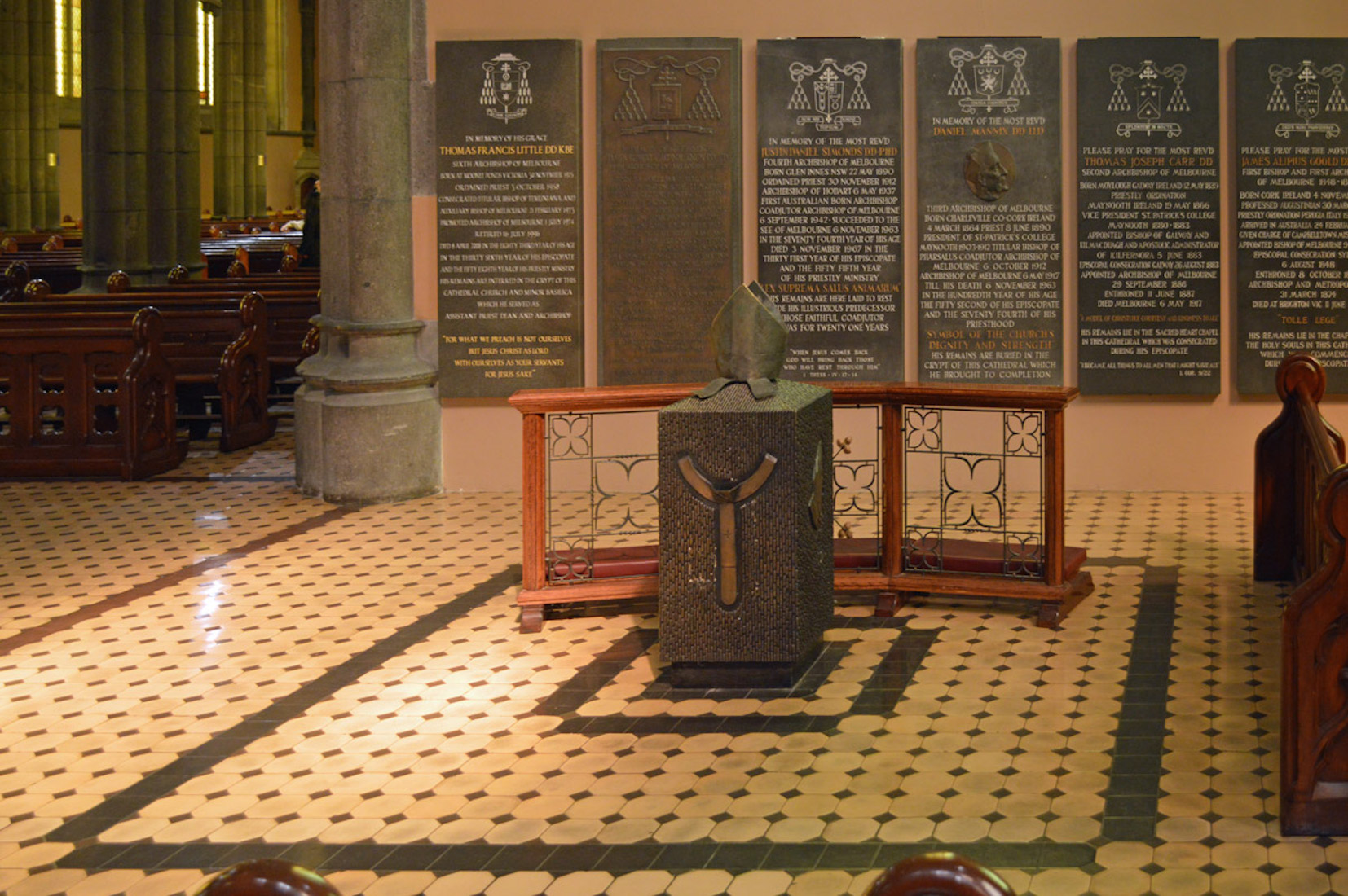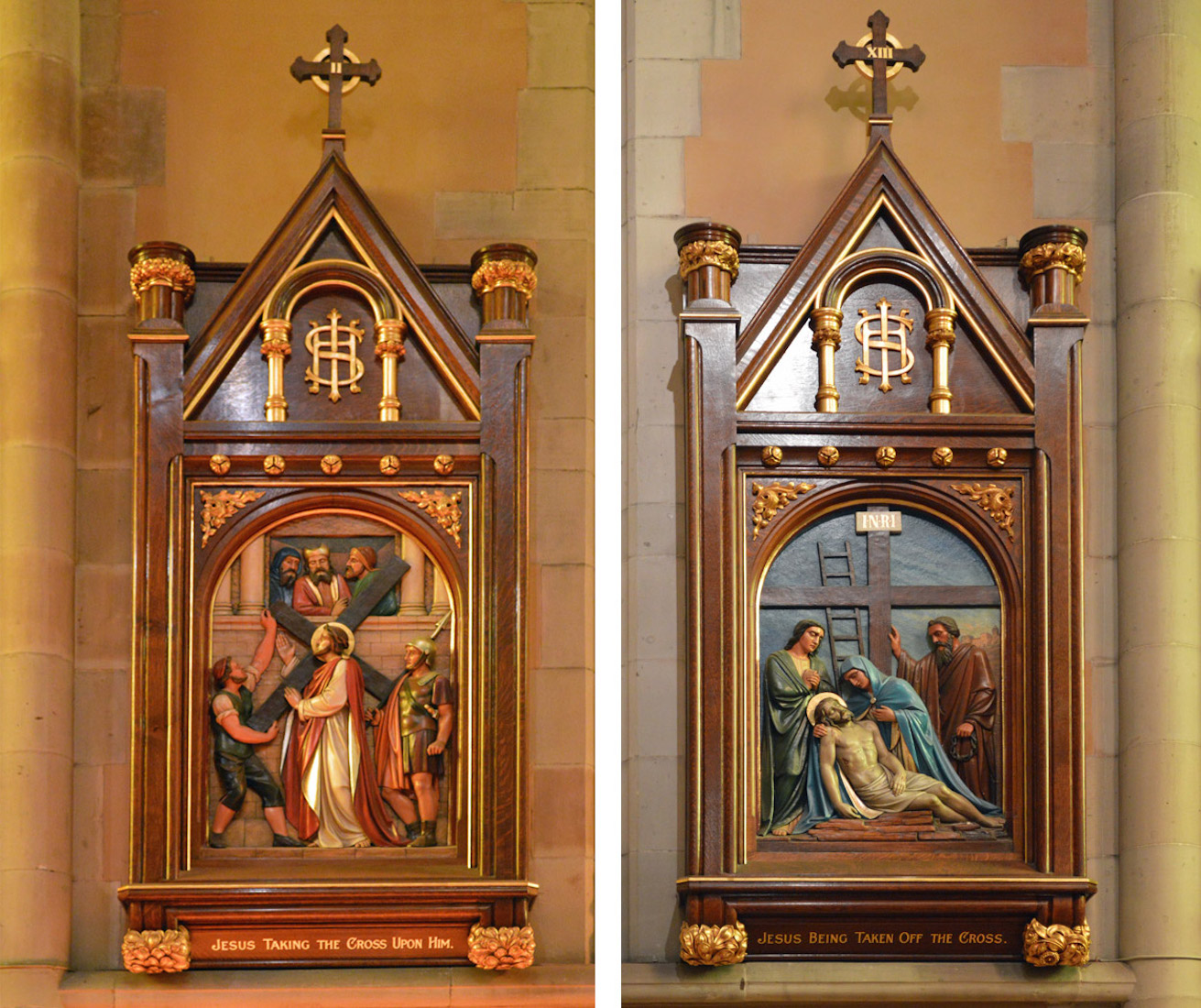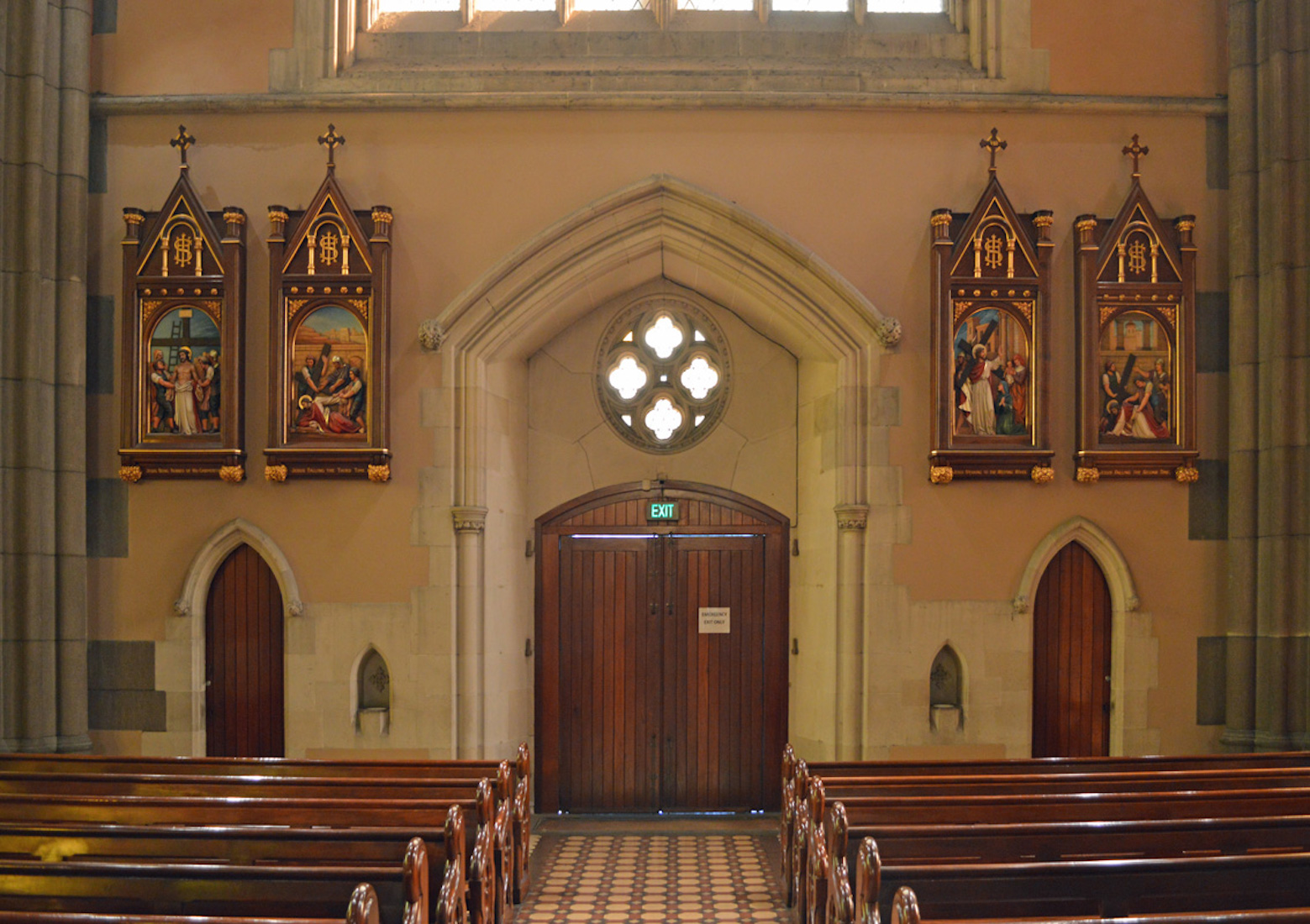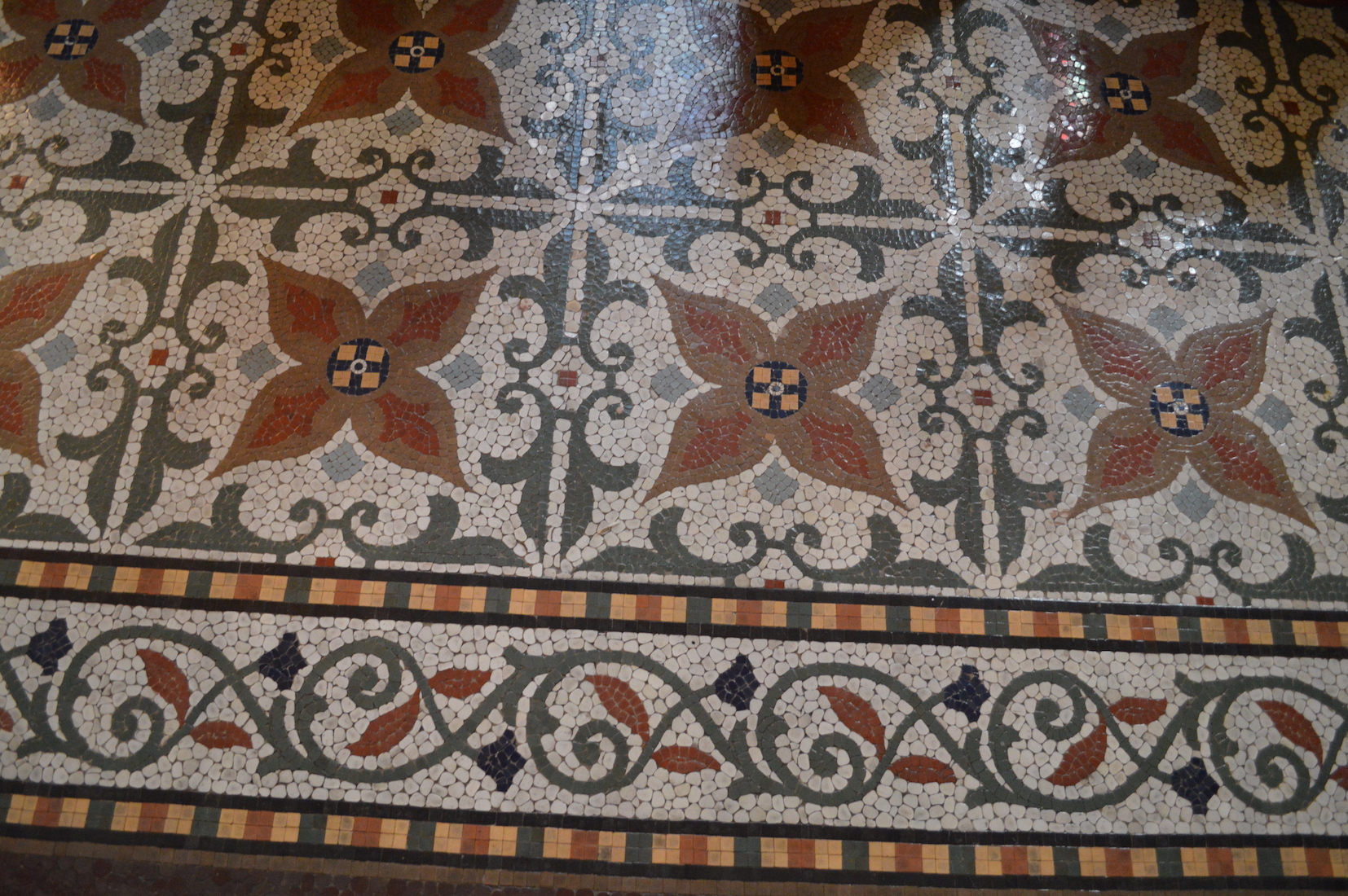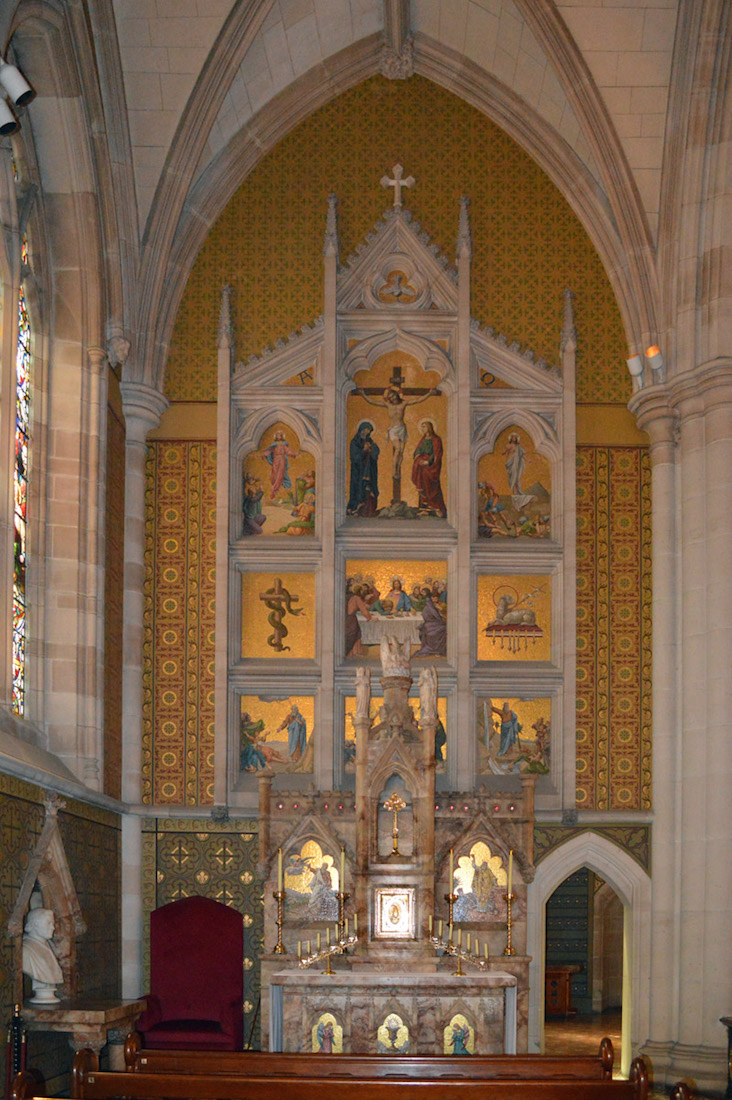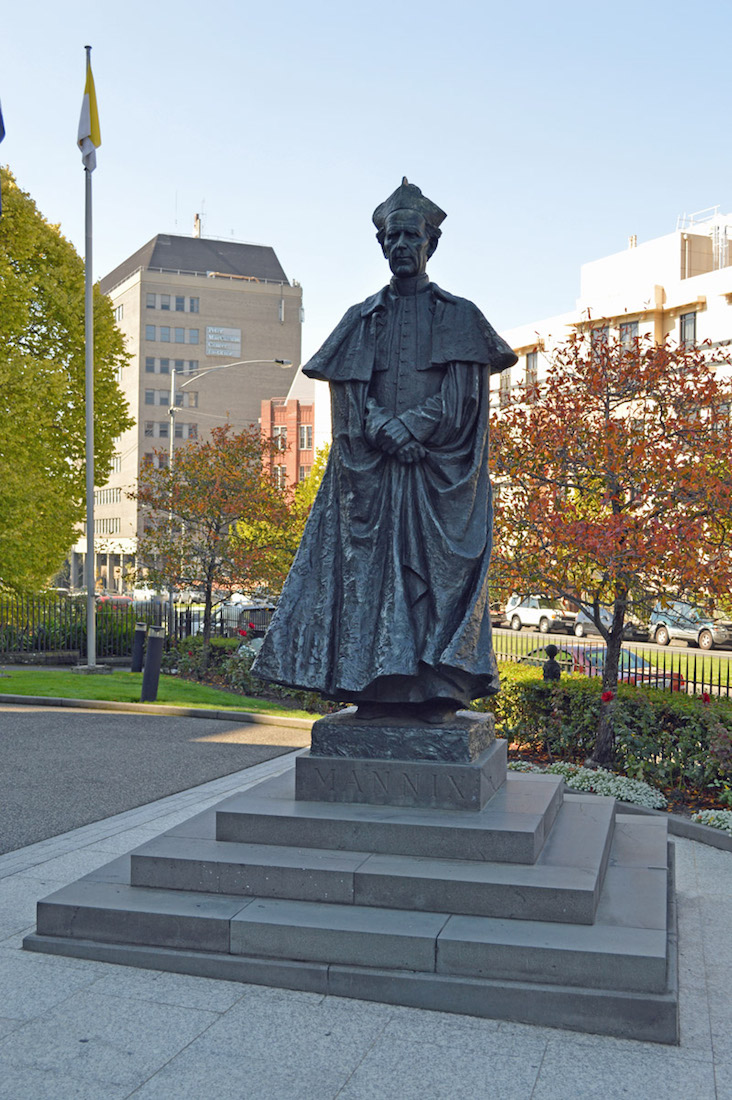
The larger-than-life statue of Archbishop Mannix, sculpted by Nigel Bonnham, watches over the area in front of the Cathedral’s main West entrance. It was during the Archbishop’s reign that the Cathedral was finished: the three towers and spires were enlarged and completed in 1939, to the design of Conolly and Vanheems to commemorate the centenary of Catholicism in Melbourne. In the 1930s the main entrance on the west front of the Cathedral was also reconceived, enlarged and constructed as it is today. PLAN
22. PAVEMENT
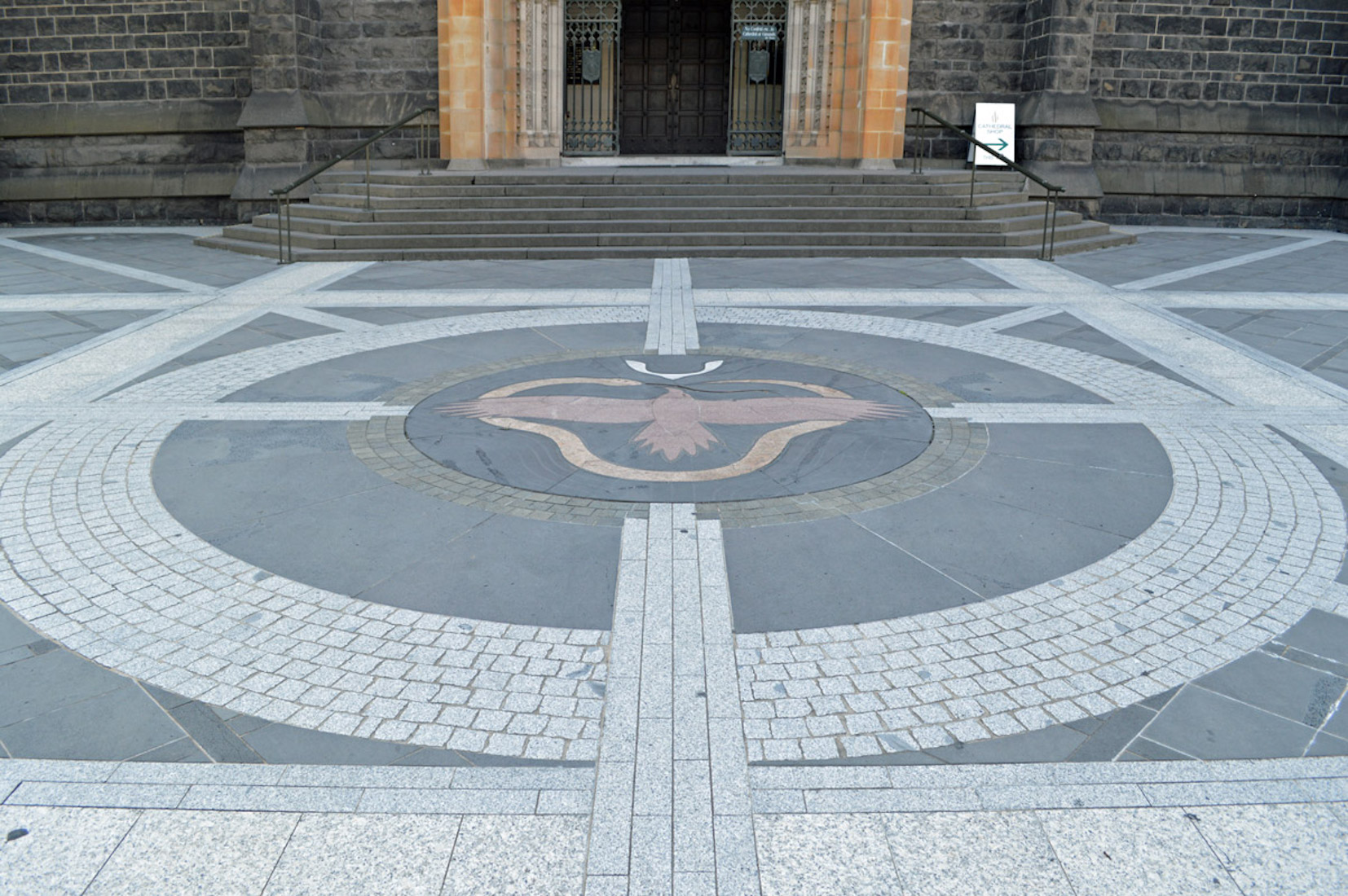
The stone inlay in the pavement in front of the Cathedral recognizes and celebrates the strong Aboriginal Catholic ministry in Melbourne. Its symbolism draws on Aboriginal spirituality and Christian iconography: on dreaming and faith traditions respectively. Explore the symbols of dove, snake, eagle, trefoil and water – each has a dual meaning. Inside the Cathedral there is an Aboriginal message stick mounted on the wall in the South transept.
23. WEST WALL
The imposing West Wall is notable for its solid towers and spires, Its Great West Window, and its West doors.
24. WEST DOOR
There is much to notice about the West doorway. The doors have less of a nested effect than the transept doors. Also here, the feature in the gable is not a face, but a complex symbol of crown, lyre and crossed keys. This Papal Insignia recognizes that St Patrick’s Cathedral was accorded the title ‘Minor Basilica’ in 1974, following the international Eucharistic Congress held in Melbourne in 1973.
25. WEST DOOR FACE
Every Cathedral has its mysteries, or at least its secrets known only to the initiated few. Who is this looking down from above the West doors, watching over those entering the great Cathedral?
26. WEST DOOR GRILL
The bronze tracery grill above the West entrance is also worth some investigation. The grill features St Patrick, with St Brigid and St Columba on either side. In the space between and above are the monograms of the Holy Name (IHS) and of the Blessed Virgin Mary (BVM). It also features four angels and eight shields bearing symbols of the Old and the New Testaments: Noah’s ark, the brazen serpent and the instruments of the Passion, the chalice and host, and Christ as the Lamb.
27. WEST DOOR GATE DETAIL
The bronze gates also carry the coat of arms of Pope Pius XII (who was the reigning pontiff when the 1939 additions were installed) and the coat of arms of the first three archbishops of Melbourne.
28. INSIDE WEST DOORS
We now enter the Cathedral through the West door. On either side of the main door is an icon. The left icon depicts the Madonna and Child. The inscription below reads: Great Jubilee Year 2000 AD. At right is an Icon of Christ – perhaps teaching? The artist’s intention is not clear. The words beneath are: Jesus Christ Yesterday Today Forever.
29. NAVE
Whenever I visit a Cathedral, a favourite moment is to first stand at the back and appreciate the view down the nave. Here the twelve bluestone pillars, reminiscent of the twelve apostles, march toward the front, bathed in amber light. Each bears a brass plaque commemorating early donors. The pillars also direct our eyes upwards to the magnificent hammer beam roof, reminding us of English parish churches.
30. BAPTISTRY
The baptismal font sits in the North West corner of the nave. A 17th Century painting of ‘The Finding of the Child Jesus in the Temple’ forms a backdrop.
31. FONT
The baptismal font is made of soapstone and features symbolic representations of graces received through baptism. At the foot of the font are various grotesques, representing the devils cast out by baptism.
32. PAINTING
On the East wall of the baptistry is another painting, this one of Christ after the Crucifixion. The symbolism is that in baptism we die to the old self and are raised to new life in Christ. The painting has no helpful identifying marks ... .
33. MODEL
It is not uncommon for a Cathedral to have a scale model of the building on display, and this is true of St Patrick’s. This model is located near the baptistry. The flying buttresses and roof designs are easily seen in this model. I notice that the Southern confessionals do not appear here.
34. ST AUGUSTINE
On a column near the baptistry we come across another mystery. This painting shows St Augustine with quill in hand, and obviously in the act of writing, crushing a poor fellow underfoot. Perhaps the miscreant has been caught destroying holy pages ... .
35. TO NORTH TRANSEPT
We proceed down the North aisle and approach the North transept. The height and spaciousness of this Cathedral are quite striking. We notice that here, as in the nave, many of the windows are plain. We also catch sight of some stations of the Cross here. Beyond the transept we catch a glimpse of the first of the seven chapels.
36. ARCHBISHOPS WALL
Plaques commemorating Melbourne’s Archbishops, James Alpha Goold (1848 –1866), Thomas Joseph Carr (1886–1917), Daniel Mannix (1917–1963), Justin Daniel Simonds (1963–1967) and James Cardinal Knox (1967–1974),are located in the Northern transept. Archbishops Mannix and Simmonds and Cardinal Knox are buried in the vault beneath the floor of this Transept.
37. STATIONS OF CROSS
The 14 stations of the Cross are located in the North and South transepts. They are attractive and colourful three-dimensional portrayals of Christ’s journey to the Cross.
39. APSE MOSAIC TILING
We turn now from the North transept towards the Eastern chapels. We become aware of increased decoration, first in the beautiful mosaic tiling of the floor.
40. BLESSED SACRAMENT CHAPEL
The first chapel, closest to the North transept, is the Blessed Sacrament Chapel. The altar reredos has two mosaics depicting scenes of sacrifice and of spiritual nourishment described in the Old Testament – the Sacrifice of Abraham and Isaac, and the meeting of Abraham and Melchisedech. The tabernacle, made in 1900, features a pelican motif, representing the Eucharist. The pelican is a symbol of Christ because according to myth she feeds her young with blood from her breast in times of the scarcity of food and thereby gives her life for her young.


